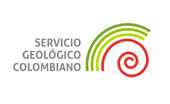References
TECHNICAL DESCRIPTION
The Global Exposure Map (v2018.1) presents the geographic distribution of residential, commercial and industrial buildings. The number of buildings is presented on a hexagonal grid, with a spacing of 0.30 x 0.34 decimal degrees (approximately 1,000 km2 at the equator). The datasets employed to develop this exposure map were provided by national institutions, or developed within the scope of regional programs or bilateral collaborations. This global map and the underlying databases are based on best available and publicly accessible datasets and models. The Global Exposure Map is intended to be a dynamic product, such that it may be updated when new datasets and models become available. Releases of updated versions of the Global Exposure Map are anticipated on a regular basis. Additional exposure and risk metrics for each country can be explored at https://www.globalquakemodel.org/gem.
Many thanks to our Sponsors and Contributors.
Cite this work as:
V Silva, D Amo-Oduro, A Calderon, J Dabbeek, V Despotaki, L Martins, A Rao, M Simionato, D Viganò, C Yepes, A Acevedo, N Horspool, H Crowley, K Jaiswal, M Journeay, M Pittore (2018). Global Earthquake Model (GEM) Exposure Map (version 2018.1). DOI: 10.13117/GEM-GLOBAL-EXPOSURE-MAP-2018.1
This work is licensed under the terms of the Creative Commons Attribution-NonCommercial-ShareAlike 4.0 International License (CC BY-NC-SA): https://creativecommons.org/licenses/by-nc-sa/4.0/
Legal statements
This map was created for dissemination purposes. The information included in this map must not be used for the design of earthquake-resistant structures or to support any important decision involving human life, capital and movable and immovable properties. The values of seismic hazard in this map do not constitute an alternative nor do they replace building actions defined in national building codes. Readers seeking this information should consult national databases. This hazard map is the combination of results computed using 30 hazard input models covering the vast majority of landmass. These models represent the best information publicly accessible, and the GEM Foundation recognises their credibility and authoritativeness. This hazard map results from an integration process that is solely the responsibility of the GEM Foundation.
MAJOR SPONSORS








































